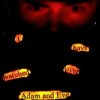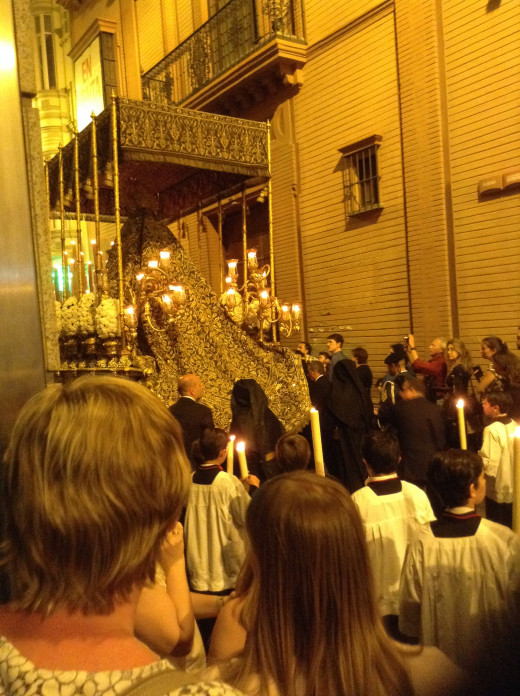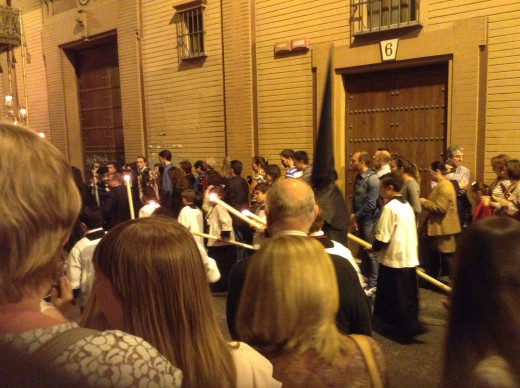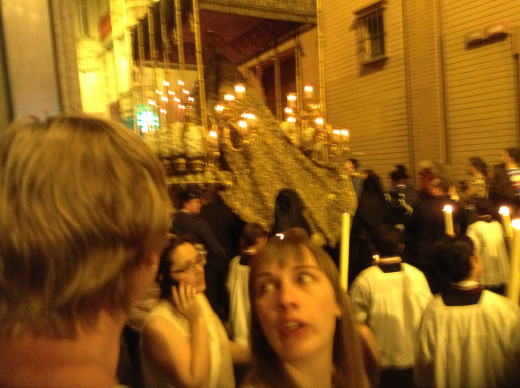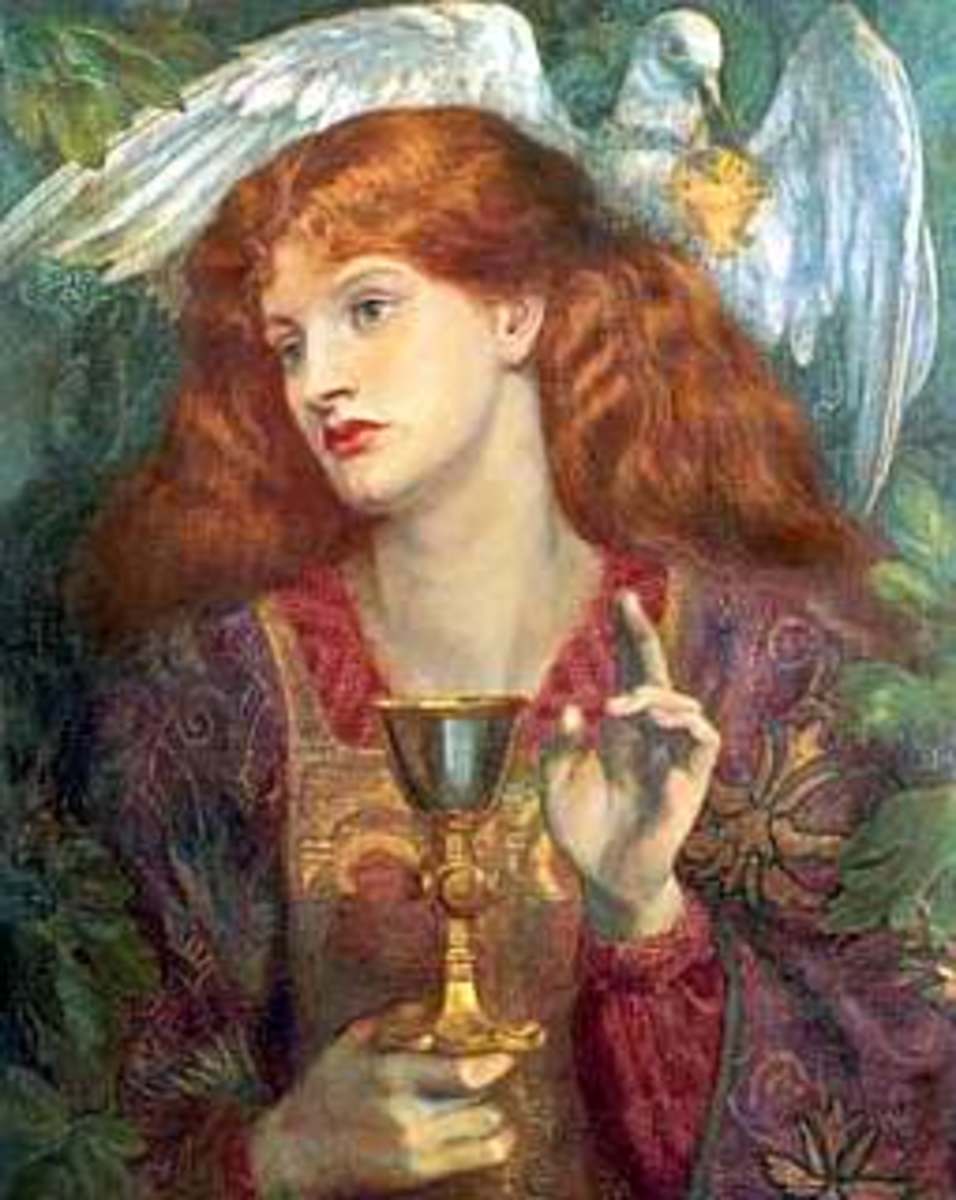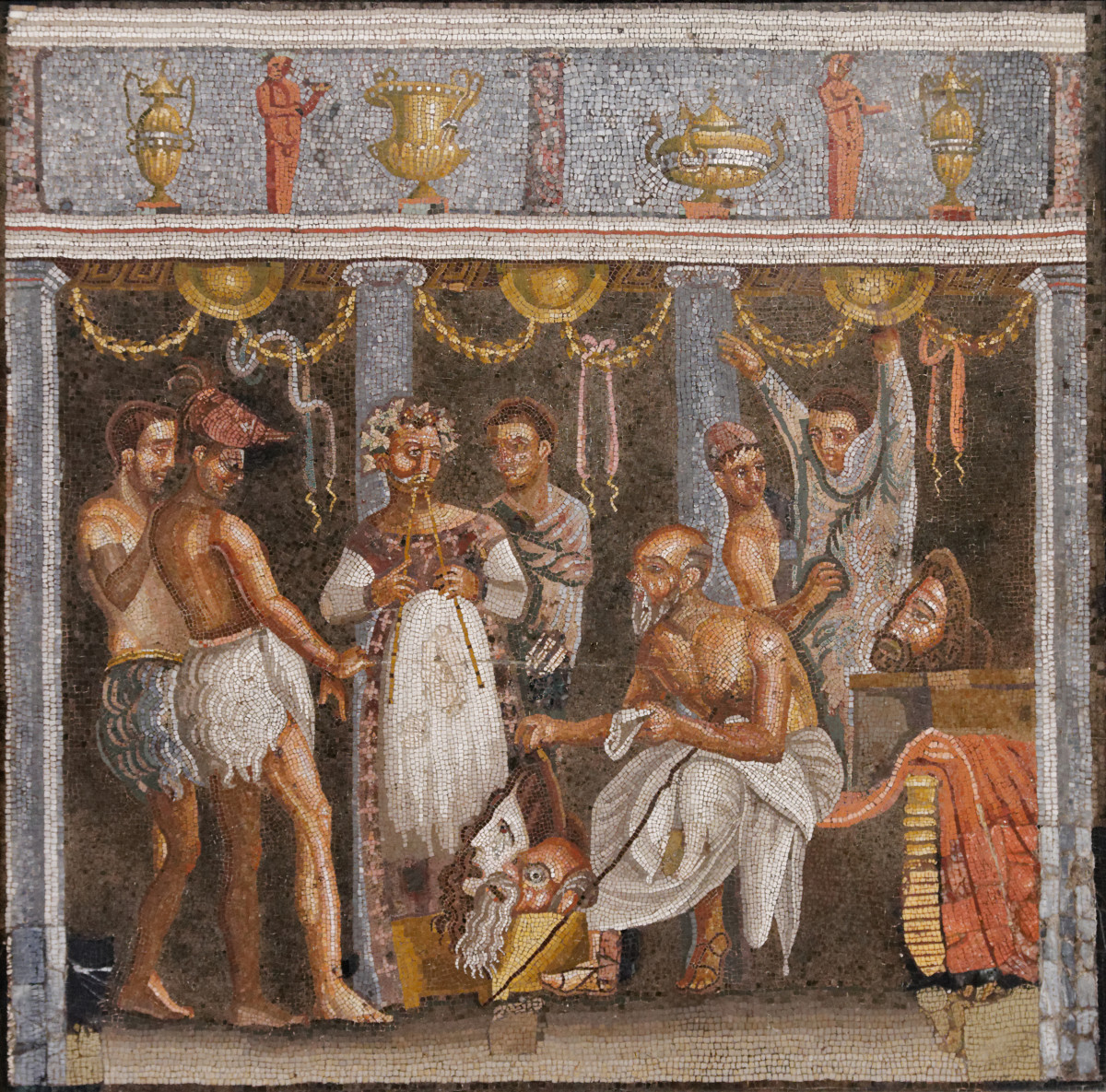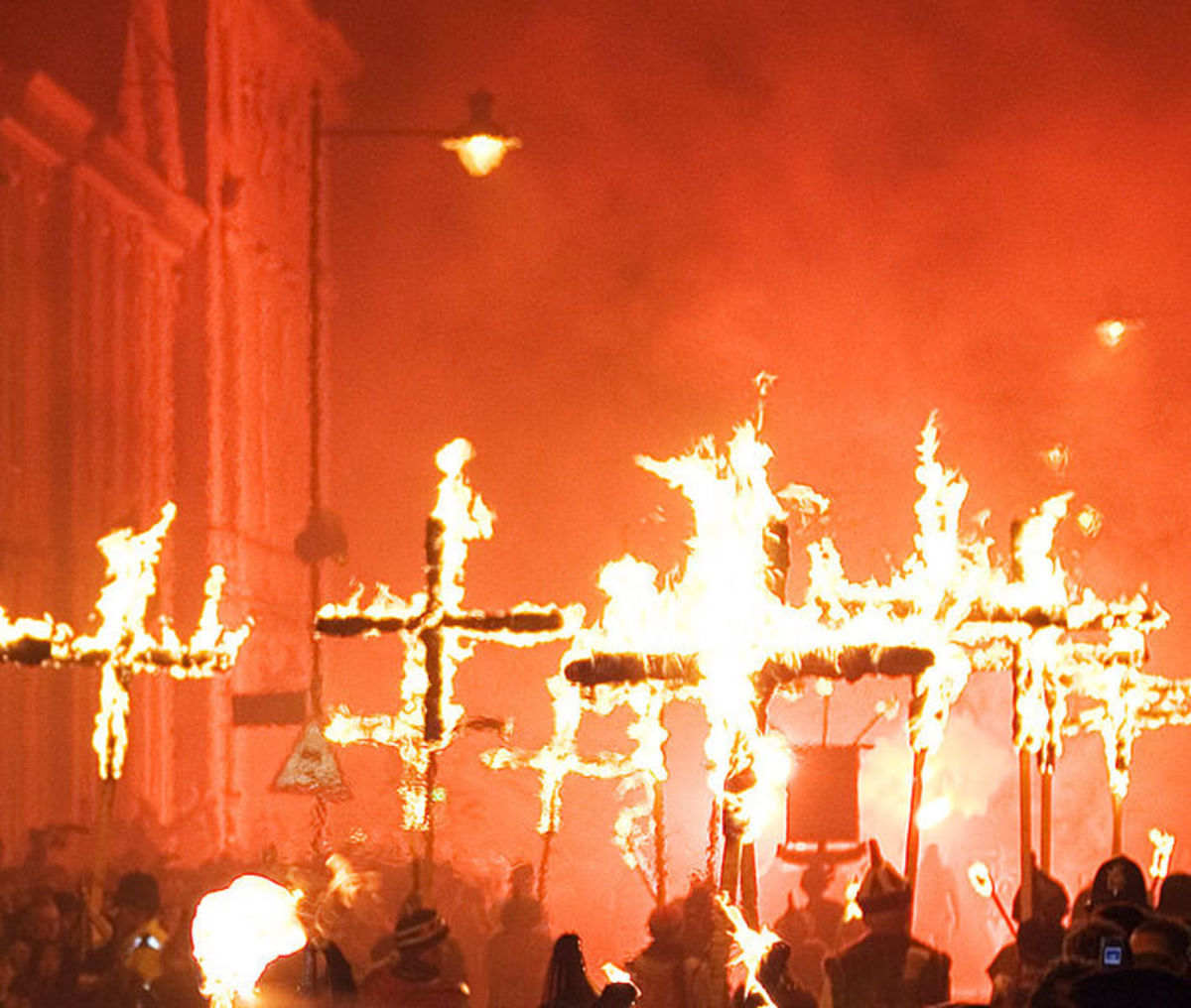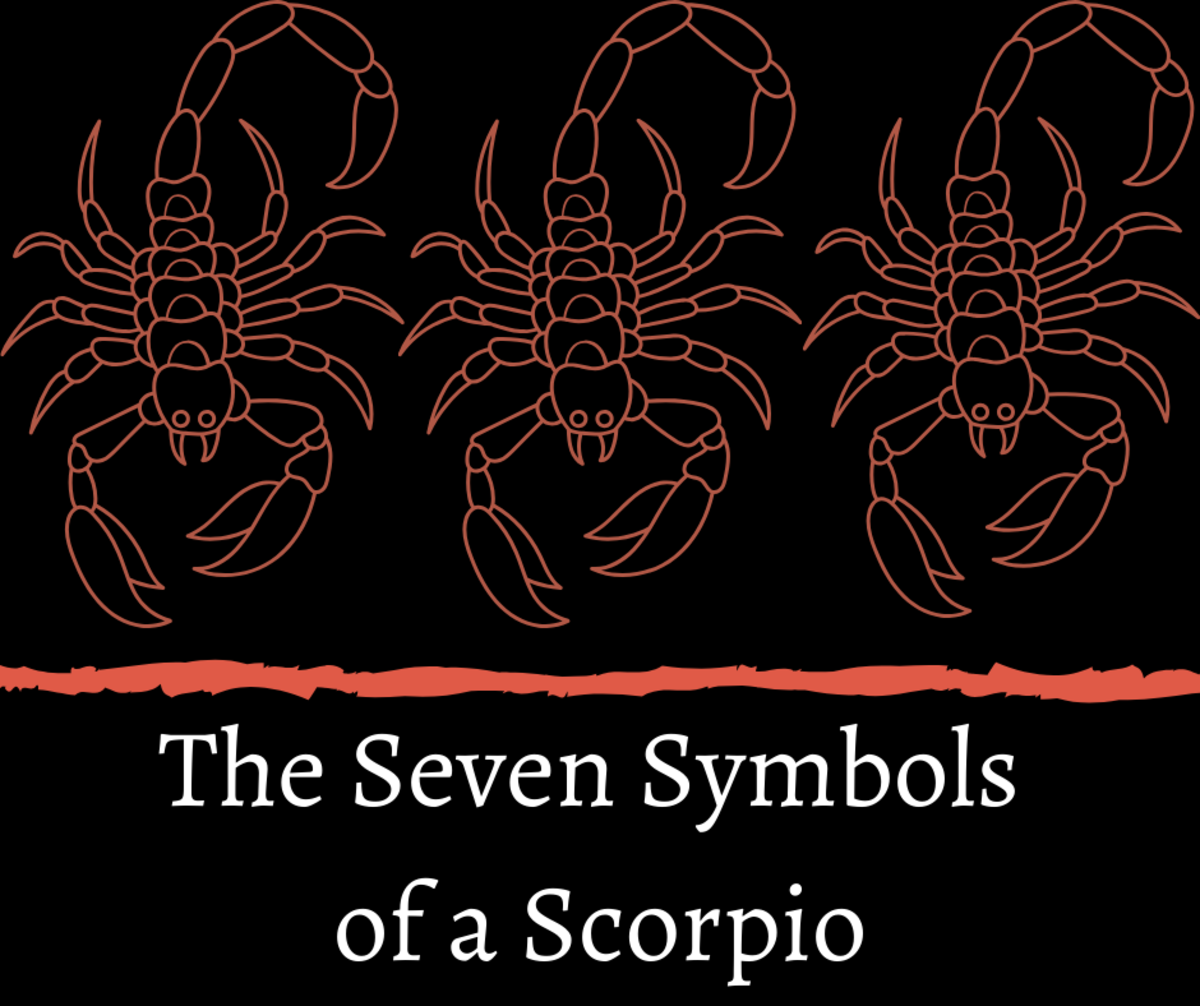The Medieval Procession of Penance at Furnes
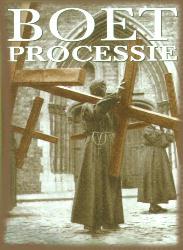
A Real Mystery Play...
According to an article published in The New York Times (October 25, 1908), the Belgian city of Furnes (Veurne) celebrates a Medieval Procession of Penance or Penitence, a religious pageant being 500 years old. But it is said that the Procession originated in 1099 when Count Robert II of Flanders returned from Jerusalem with a splinter from the Holy True Cross. However, one of the greatest mysteries of this Mystery Play is why there is not one modern source or Belgian website where you can find this information. Check out for instance the official website of the Procession, where the history starts in 1637. It's as if the dark origins of the Penitents in Flanders, the Dutch speaking part of Belgium, are erased from the history books...
Brief History of a True Mystery Play
In 1908 The New York Times reported that the 500th anniversary of the Procession of Penance (or Penitence), held annually at Furnes, had just taken place with great pomp: "The procession is one of the last remaining Christian mysteries and represents the life of Jesus Christ. According to tradition, it was instituted by Robert of Jerusalem, Count of Flanders, for the purpose of carrying about in great state through the streets of Furnes a splinter of the Holy Cross which he had brought back from Jerusalem. Gradually, owing to the popular taste for public parades, other mysteries were added to the great Christian drama - the legend and mystery of Tobias and the mystery of St. Sebastian."
Robert II was the eldest son of Robert I of Flanders, also known as Robert the Frisian, and Gertrude of Holland. His sister Gertrude would become the mother of Thierry of Alsace, the count of Flanders who brought the Holy Blood to Bruges. Robert the Frisian was an enigmatic person: from 1085 to 1091, he went on a secret mission to the Holy Land, as if he had to scout something. He died in 1093 and two years later the First Crusade was launched by Pope Urban II. His son, Robert II of Flanders, joined Godfrey of Bouillon, Duke of Lower Lorraine. In Constantinople, they had to promise to Byzantine Emperor Alexius I Comnenus to return any land they might capture to the Byzantine Empire. Robert, whose father had already served Alexius during his "pilgrimage" , had no problem swearing this oath, but some of the other leaders did.
Jerusalem was captured on July 15, 1099. Robert supported Godfrey's claim to the city and the establishment of the Kingdom of Jerusalem. At the end of August, Robert returned home by way of Constantinople. He declined the request of the Byzantine Emperor to stay there in his service. The "Liberator of the Holy Sepulchre" was a cruel crusader who seems to have really enjoyed the murdering and the pillaging. According to Wikipedia, " Robert brought back with him a precious relic, the arm of Saint George, a gift from Alexius. The relic was placed in the church of Anchin Abbey in Flanders (now in France, near Douai). After he returned, Robert built the monastery of St. Andrew near Bruges. Because of his crusade and the spoils he brought home, he was nicknamed Robert of Jerusalem."
Wikipedia does not mention the relic of the Holy Cross which was given by the Count of Flanders to the St Walburge Church in Bruges, where the relic already in the 12th century would be the centre of a Procession that honoured the theme of penitence. The modern festival takes place on the last Sunday of July and still has a penitent theme. It's one of the best known Festivals of Western Europe: "Today's solemn procession features episodes from the Passion story. Some are dramatized by actors playing the parts of various Old and New Testament characters; others by carved wooden figures, mounted on platforms and carried on the shoulders of penitents. Forty or more of the groups are introduced by angels or other characters who recite explanatory verses concerning scenes that are to follow. (...) Last of all the Sacred Host appears, carried by several bishops. As the Sacrament passes, spectators kneel in adoration. A hush falls over the great crowd..."
People joining the solemn procession, both men and women, wear clothes made of rough material or coarse woolen robes and they cover their heads with hoods having only slits for eyes. These people, who are not actors, are seeking expiation from sin through bearing their crosses, as Jesus bore his to Calvary. Once the procession has returned to the Church of Saint Walburga from which it issued, however, all Furnes gives itself to the joy of a "kermis" (kermess, fair) in the market place.
The New York Times article gives us a good idea of how the Procession took place in 1908:
"The procession itself is formed within the Church of Sainte-Walburge. Outside the horses of the Roman soldiery may be seen prancing about, while Mary, seated on an ass, is awaiting the start for the flight into Egypt. Then the penitents, dragging after them carts with the stable of Bethlehem, the Holy Sepulchre, the Resurrection, and the Ascension, slowly leave the church, followed by a long line of rosy-cheecked girls with white veils.
As the lines of the procession unfold themselves the general impression given is that of a variegated river of gold, purple and blue. First come the chariots, representing the Sacrifice of Abraham, the Prophets and the three troubles of David, followed by the scourges - War, Pestilence, and Famine. Then appear St. John, the Hermits and the Shepherds; an angel precedes the stable, within which Mary and Joseph are seated.
On entering Jerusalem, young girls, men, women and children wave palm branches and sing the hosanna. The Twelve Apostles appear, and among them Jesus, riding on an ass, followed by five chariots, representing respectively the Lord's Supper, the Garden of Olives, the Denying of St. Peter, the Flagellation, the Crown of Thorns, and the Ecce Homo. Jesus then passes by dragging the Cross; twelve soldiers and the executioners with their instruments of torture walk beside Him.
At that moment intense excitement prevails in the crowd of onlookers. Perfect silence reigns; on the pavement men, women and children, kneeling, pray aloud, their rosaries in hand. At every house window are lighted candles. It is no uncommon sight to see some poor old women, carried away by their religious fervor, throwing coins in front of the Cross, this humble offering from these simple souls being one of the most characteristic incidents of the Furnes procession.
Mary and St. John, weeping and lamenting, follow behind Jesus; then Veronica appears with the holy kerchief, preceded by an angel, who calls upon all those tempted to complain of their lot to take into consideration the sufferings of Our Lord. The assembled penitents then display the several emblems of the Crucifixion - the sponge, the nails, the spear, and the shroud. Then other penitents follow: a chariot with the Holy Sepulchre appears, while little girls in mourning attire lament aloud. Our Lady of Seven Sorrows passes by, accompanied by two weeping virgins, and, finally, a chariot with the Resurrection ends the cortège.
Crowds of the faithful then swell the procession. The penitents march in close ranks, torches in hand, the men hooded, the women veiled and barefooted, weighed down all of them by the heavy crosses they drag along. Thousands of moving tapers surround the Blessed Sacrament, borne under a canopy in the midst of the clergy and brotherhoods.
To-day, as in centuries past, the inhabitants of Furnes show the same zeal to play a part in the historical procession. Every position is sought for as eagerly as a public office, the number of applicants being far beyond what is required, even for carrying the canopies and crosses. Some of the principal parts in the procession are hereditary in certain families. Nothing has changed in the arrangement of the procession, which remains to-day what it was centuries ago. The brotherhood, La Sodalité, assumes the task of arranging the necessary rehearsals, regulates the hundred and one details of the procession, and jealously maintains its traditional characteristics."
Read More about the Rennes-le-Château Mystery
- The Holy Blood of Bruges, a New Jerusalem
The Holy Blood of Christ seems to have turned medieval Bruges (in Flanders, Belgium) into a Holy City. It's what, since the 19th century, made tourism popular in Bruges. But maybe this Holy City is not as holy as it seems...
Before & After the Sacrilege
The New York Times article tells us that the Procession of Penance, from the 12th century on, steadily degenerated until in the 17th century it had become little better than "a burlesque". The central figure was "a gayant", one of those gigantic old time Flemish puppets which have always played an important part in the popular festivals of the Lowlands. Finally, a brotherhood was founded to put an end to the profanity. This fraternity, called the Sodality of Our Crucified Lord, restored the primitive mystery. But shortly after, "two soldiers having seized the consecrated wafers and transfixed them with their spears, a public reparation was deemed necessary to atone for the sacrilege. In this manner originated the present annual procession through the streets of Furnes.
One of the mysteries of the Procession of Penance is why the official website states that the Procession originated in 1637, with the founding of the Sodality by Jacob Clou, and that the statues, the carved wooden figures (that once were the "gayants") for the first time appeared around 1700. Why the 12th century origins and sources of the procession are erased from the official records? Perhaps the answer to this question has to be found in "the sacrilege", which possibly has something to do with the Book of Tobias (or Tobit), the Arma Christi (the = the Weapons of Christ, the Instruments of the Passion: nails,scourge, spear, dice, robe, reed, column from the Flagellation of Christ, crown of thorns, stone, torches, ladder, bucket for the vinegar) or the very similar La Sanch procession in Perpignan. The Book of Tobit, the Arma Christi and La Sanch all played an important part in various theories regarding ancient and modern heresies.
The Book of Tobit is a part of the Catholic and Orthodox biblical canon, but by Protestants it is regarded as being apocryphal. It is found in the Greek Old Testament and fragments were discovered in a cave in Qumran in 1952. The book tells the story of an Isreaelite named Tobit living in Nineveh, who was particularly noted for his diligence in attempting to provide proper burials for fallen or murdered Israelites. At night, sleeping in the open after he had buried a dead mean who had been murdered on the street, he was blinded by bird droppings that fell in his eyes. This put a strain on his marriage, and ultimately, he prayed for death.
Meanwhile, in Media, a young woman in despair also prayed for death. Sarah had lost seven husbands to the demon of lust, Asmodeus, who abducted and killed every man she married on their wedding night before the marriage could be consummated. God now did send the angel Raphael, disguised as a human, to heal Tobit and to free Sarah from the demon. The son of Tobit, Tobias, was sent by his father to Media to collect a sum of money. Under the guidance of Raphael and accomponied by his dog, Tobias made the journey. Along the way, he was attacked by a giant fish, whose heart, liver and gall bladder were removed to make medicines. Upon arriving in Media, Raphael told Tobias he had to marry the beautiful Sarah and the angel instructed him to burn the fish's liver and heart to drive away the demon when he attacked on the wedding night. Tobias ande Sarah got married and the fumes of the burning organs drove the demon away. Sarah's father, who had been digging a grave to secretly bury Tobias (who he assumed would be dead by now) was very surprised to find his son-in-law alive and well, and ordered a double-length wedding feast while he had the grave secretly filled. Tobias and Sarah return to Nineveh, where Raphael told Tobias to use the fish's gall to cure his father's blindness...
At some point, the Book of Tobit got associated with a heretical Cult of the Dead, practised by the penitentiary momevents who already were associated with the Arma Christi, with the La Sanch Procession in Perpignan or the La Sang in Gerona. "A secret society of penitents" were the veritable powerbrokers that held the Arma Christi or the Rennes-le-Château mystery. They called themselves the "Ebionites" or used other names, but could be identified by the specific Tau Cross that also specifically was linked with the penitential tradition.
Penitents of the Semana Santa (Holy Week) in Sevilla, Spain.
Click thumbnail to view full-size


